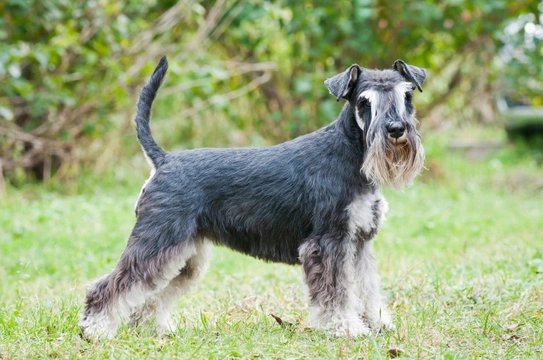
Five fascinating facts about the schnauzer dog breed
The schnauzer is a German dog breed that is today very popular as pets all over the world, including within the UK. They were originally bred to help with rodent control and they are highly effective and adept ratters, and they can also turn their paws to working with livestock in terms of herding and guarding. Most dog lovers in the UK can identify a schnauzer by sight, and they are fairly common too, so you may well see them around regularly when you’re out walking in dog-friendly areas.
Because the schnauzer breed comes in three sizes too, they are versatile enough to be a good fit for all sorts of homes and owners from all walks of life. They also have an interesting history, and lots of unique traits to the breed as well! If you own a schnauzer, are considering buying one or simply find them endearing and want to find out more, read on!
In this article, we will share five fascinating facts about the schnauzer dog breed that you may not already know.
There are actually three schnauzer breeds
When we talk about schnauzers, we tend to use the name as a catch-all title to describe all of the various different sizes that schnauzers can be found in-miniature, standard and giant. While most dog breeds that come in different sizes are all classed as variants of the same breed-as is the case with the poodle-each of these three schnauzer variants are actually classed as standalone breeds in their own right, despite their only difference being size!
The standard schnauzer was the original schnauzer, and selective breeding to produce both a smaller and a larger variant resulted in the formation of the miniature and giant breeds.
Their distinctive appearance is relevant to their working roles
The schnauzer breeds (of all sizes) have a very distinctive appearance, most notably because of their thick leg feathers and impressive beards! The shape and build of the breed is quite distinctive too, with their fine necks, pointed heads and small ears.
This conformation is what made the schnauzer such a good fit for their traditional working role as ratters, and helped to protect them from rodents that fought back! Some rats can be fairly large, and when pinned into a corner, potentially aggressive when fighting to avoid being killed. The thick beard on the face of the schnauzer provides an invaluable thick layer of protection from biting rats, keeping the dogs from getting bitten for their trouble!
They have a long and diverse history
The schnauzer originated in Germany, first of all as a ratter and to help to keep pests to a minimum, and later as a guarding and herding breed. However, the wider history of the breed is very interesting, and they were put to work in many different versatile roles during the first World War.
A large number of schnauzers were worked by the German army, first of all as guard dogs and later as dispatch carriers for the Red Cross! Later, they were used by the German police in other working roles, and as the breed spread internationally, became useful to law enforcement in other countries such as the USA, where they were one of the preferred breeds for roles as diverse as search and rescue and bomb detection!
They need a lot of grooming and maintenance
A groomed, trimmed schnauzer may look as if they have a short, tousled coat that is easy to take care of, but in reality the schnauzer actually has quite onerous requirements in terms of their coat care and grooming. Most schnauzer owners have their dogs trimmed and clipped regularly to keep their feathering and facial hair under control, and they also need to be brushed several times a week unless their coats are clipped down short.
Regular trips to the groomers for bathing and trimming soon add up, which is something that all potential schnauzer owners should be aware of.
They are robust, healthy and usually long-lived
The schnauzer tends to be a robust, energetic and healthy breed, which is relatively long-lived. There are some variations in terms of the different sizes of schnauzers-like many larger breeds, the giant schnauzer tends to live a slightly shorter life than the standard and miniature variants.
The average schnauzer lifespan is 13-16 years, which falls within the parameters of the top end of standard lifespans for pedigree dogs, and the schnauzer breeds as a whole tend to be hardy and not prone to suffering from a lot of minor ills.
Like all pedigree breeds, the schnauzer has a slightly higher propensity to various hereditary health conditions that can become prevalent due to selective breeding, with hip dysplasia (particularly in the giant schnauzer) being one.
However, as long as dogs of the breed are kept healthy and active, they generally float into old age comfortably and retain good health right up until the end of their lives.



